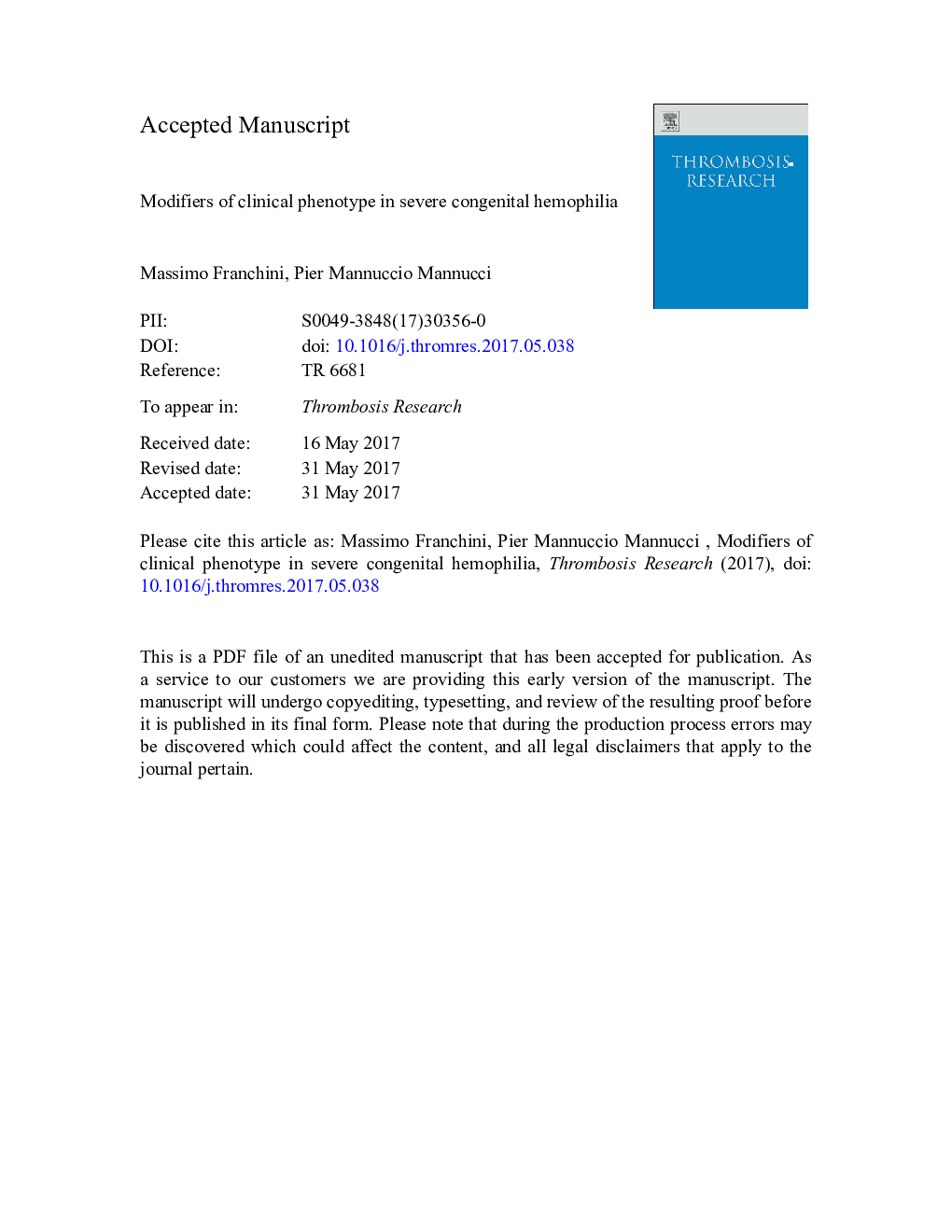| Article ID | Journal | Published Year | Pages | File Type |
|---|---|---|---|---|
| 5621873 | Thrombosis Research | 2017 | 23 Pages |
Abstract
Patients with inherited hemophilia A and B usually exhibit a bleeding tendency of a severity proportional to the degree of plasmatic deficiency of the coagulant activity of factor VIII (FVIII:C) and factor IX (FIX:C). Although patients with severe hemophilia (i.e., with FVIII:C and FIX:C levels <Â 1Â IU/dL) are generally those with the most severe bleeding phenotype, it is common experience that a variable proportion of them experiences a milder bleeding tendency. In this review, we summarize the current knowledge on the possible mechanisms at the basis of the phenotypic heterogeneity of severe hemophilia, focusing in particular on the role of FVIII/FIX gene mutations and thrombophilic polymorphisms. Finally, the possible therapeutic implications of such modifiers will be analyzed.
Related Topics
Health Sciences
Medicine and Dentistry
Cardiology and Cardiovascular Medicine
Authors
Massimo Franchini, Pier Mannuccio Mannucci,
